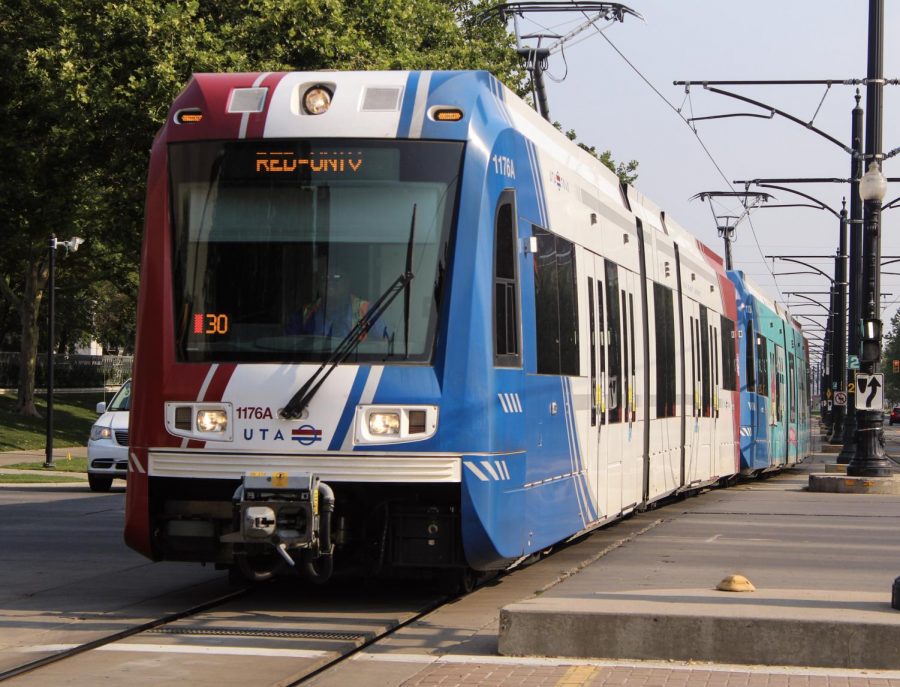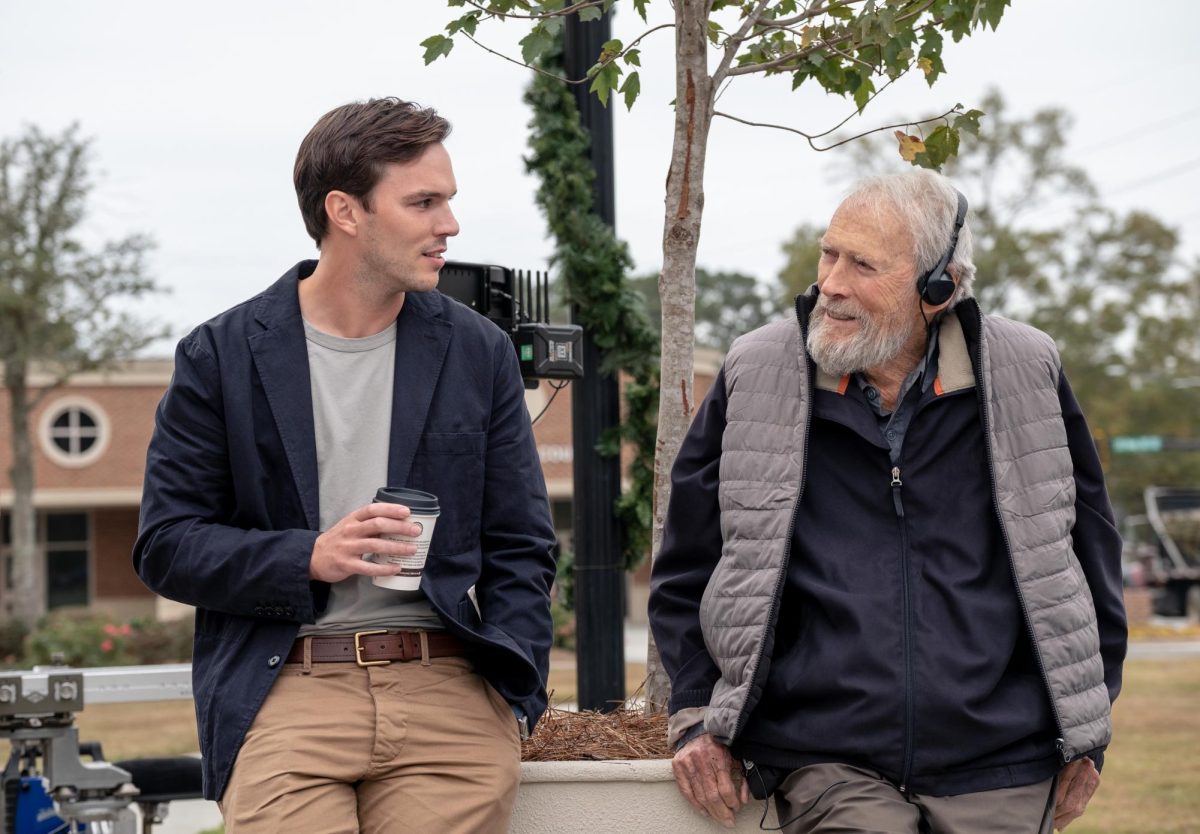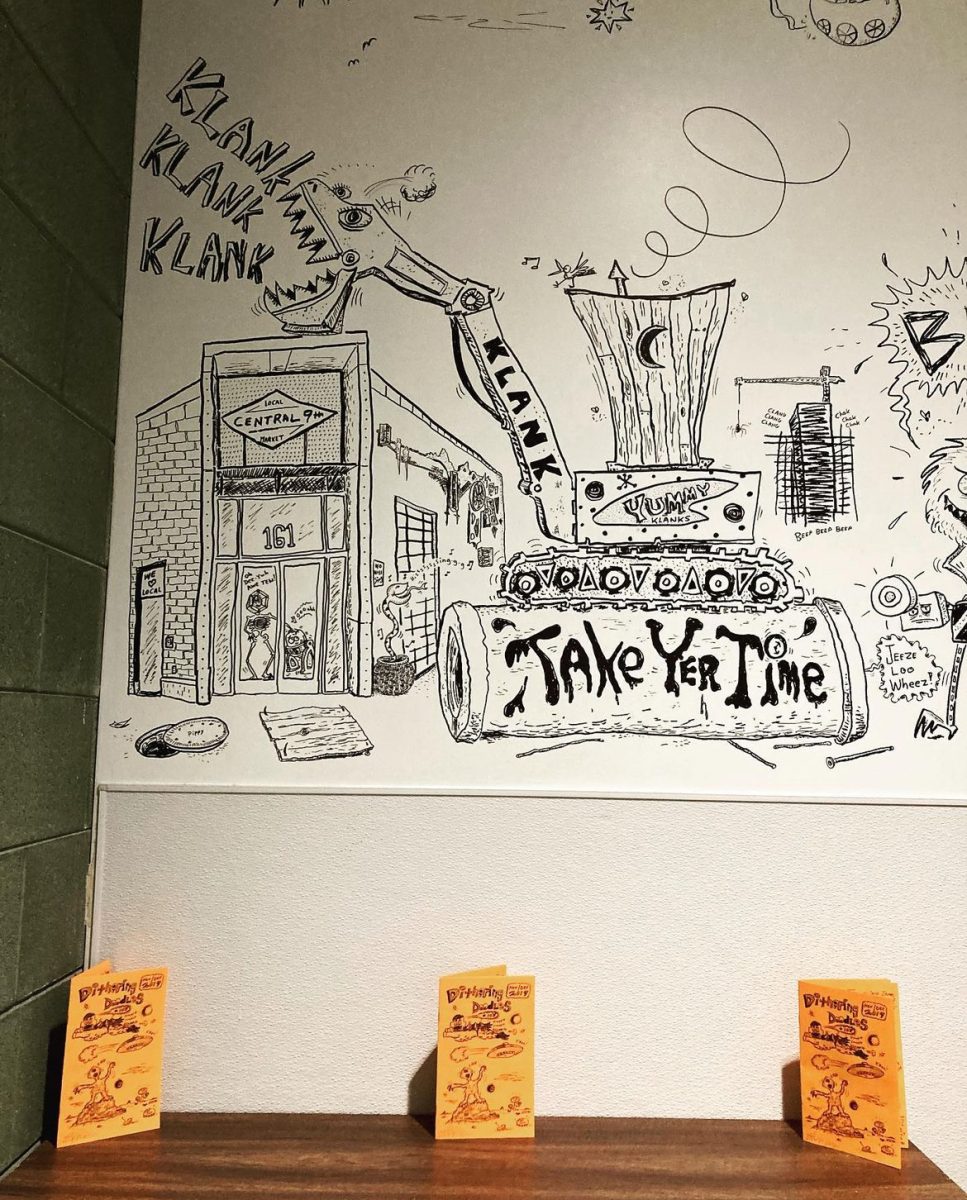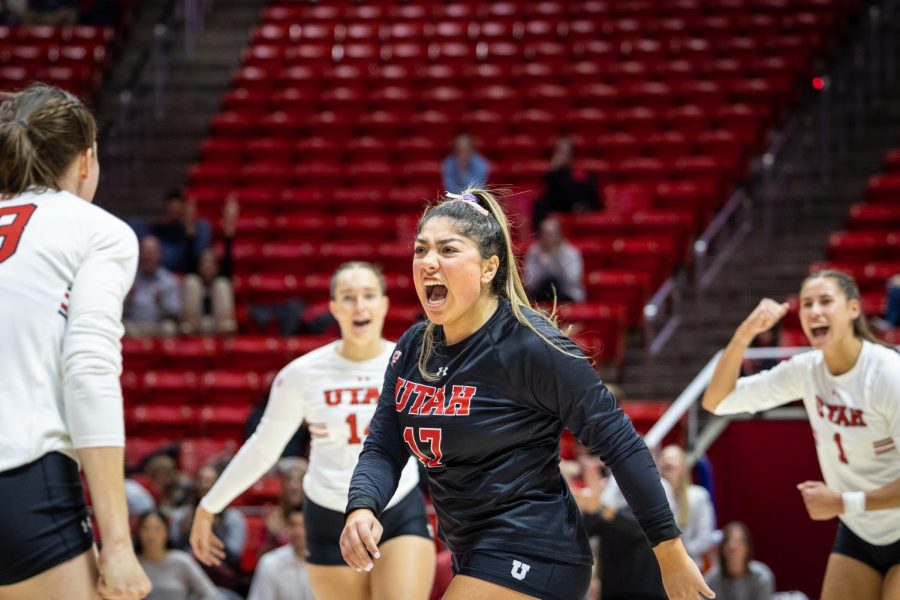Shadley: Public Transportation Should be Free During Extreme Weather
A UTA train passing through downtown Salt Lake on July 11, 2021. (Photo by Brooklyn Critchley | The Daily Utah Chronicle)
July 15, 2021
Interactions characterize city life. The more interactions someone has with different people, places and services, the richer their experience of living in the city. In Salt Lake City, the ability to access many of those interactions hinges on if someone owns a car. For those who don’t, their mobility depends on a public transportation system that has yet to recover from the effects of the pandemic.
UTA ridership fell 47% in 2020 compared to 2019. In response, trains and buses operated at a reduced frequency. Reduced ridership and operation frequency correspond with more cars on the road, which causes increased traffic and air pollution. While that affects everyone, Utahns experiencing homelessness rely on public transportation as a chance to shelter from extreme weather — something that’s become commonplace this summer.
With ridership low and temperatures high, Salt Lake City, Salt Lake County and Utah should introduce a pilot program to provide free UTA service on all days over 95 degrees. This practice would boost ridership to pre-pandemic levels, allow Utahns to escape the dangers of extreme weather, reduce air pollution and create a more robust public transit system that benefits everyone.
Increasing Ridership
When UTA implemented UVX, a rapid bus line for Utah Valley University, they saw ridership increase for the first time in 4 years. UVU students finally had free access to frequent buses and trains. For years, people have overwhelmingly suggested that UTA increase the frequency of their operations to improve the service. However, justifying more trains becomes far easier when more people want to ride them.
Nationwide, experiments throughout the past few years have shown between 20% and 60% ridership increase when cities offered free fares to riders. If Salt Lake City ran a similar, weather-dependent pilot program, UTA would gain valuable data to help provide high-quality public transportation to everyone interested.
Doing so would be far cheaper and more economically viable than it might seem. Of the nearly $600 million UTA expects to bring in for 2021, only $32 million, or around 5%, is expected to be generated by fares. By including the cost of free service in the budget, the entire state would benefit — especially when every dollar spent on transportation in America generates roughly four dollars in economic returns.
Increasing Equity
Access to most things that we associate with upward mobility actually requires mobility. The type of mobility required to navigate a city is what Jeff Rose, an assistant professor in the Parks, Recreation and Tourism Department at the University of Utah, calls “spatial mobility.” A less obvious privilege of wealth is the ability to do “what we want to do when we want to do it, spatially.”
That spatial freedom allows us to easily get to and from work, quality grocery stores, schools and other services that provide people with tools to improve their situation. In times of extreme weather, spatial mobility severely limits Utahns who don’t own cars.
A normally manageable bike ride or walk becomes far less safe when temperatures soar above 100 degrees. Without public transportation, those carless Utahns are at a distinct disadvantage. The more robust our UTA system becomes, the greater their mobility and even quality of life will become.
While public transit provides many Utahns with the ability to go to and from their home, it provides a different service for unhoused Utahns. Rose says that “one of the reasons that people who are experiencing homelessness use TRAX and the buses is to either cool off in the summer or to warm up in the winter.”
Increasing Change
By providing shelter from extreme weather conditions, UTA inadvertently fills a unique, important role in our public sphere. Rather than shy away from that role by charging fees outside of the free fare zone, UTA should aim to serve as an integral part of successfully helping with homelessness in Salt Lake City.
Free fares on days over 95 degrees or under 30 degrees would allow UTA to address thermoregulation needs for homeless individuals in a targeted way. This increased intentionality in how we view public transportation would allow it to fill more roles within our community.
If we want to reduce traffic congestion on I-15, we should think about what we do to incentivize people to commute by train. If we want to stimulate business in downtown Salt Lake City, we should consider providing a free, direct line from Sugarhouse or the University of Utah to bring more customers to those stores. We could take it a step further and see if businesses in that area could give out free UTA passes to customers. These are all possibilities that UTA and our state should be thinking about.
Whether it be by providing shelter on hot days, reducing greenhouse gas emissions or simply connecting us to one another, public transportation affects change in our lives. The nature of that change will be determined by what UTA sets out to do. Currently, we have a system hampered by the pandemic that’s nowhere near as effective at solving social problems as it could be. Perhaps public transportation, even with free fares, isn’t capable of altering a city as profoundly as I suggest. But we won’t know until we try.










Nain Christopherson • Jul 23, 2021 at 12:31 am
As one of the carless Utahns of whom you speak, I am obsessed with this idea! Will 100% be passing this article on to my friends at Envision Utah and UTA. And P.S., Will, I really think teachers should get free UTA passes – to incentivize educators to live in or closer to the neighborhoods where they work, get more cars off the road, help compensate teachers for their public service, and a million other reasons. Just while we’re thinking about public transit things. 🙂